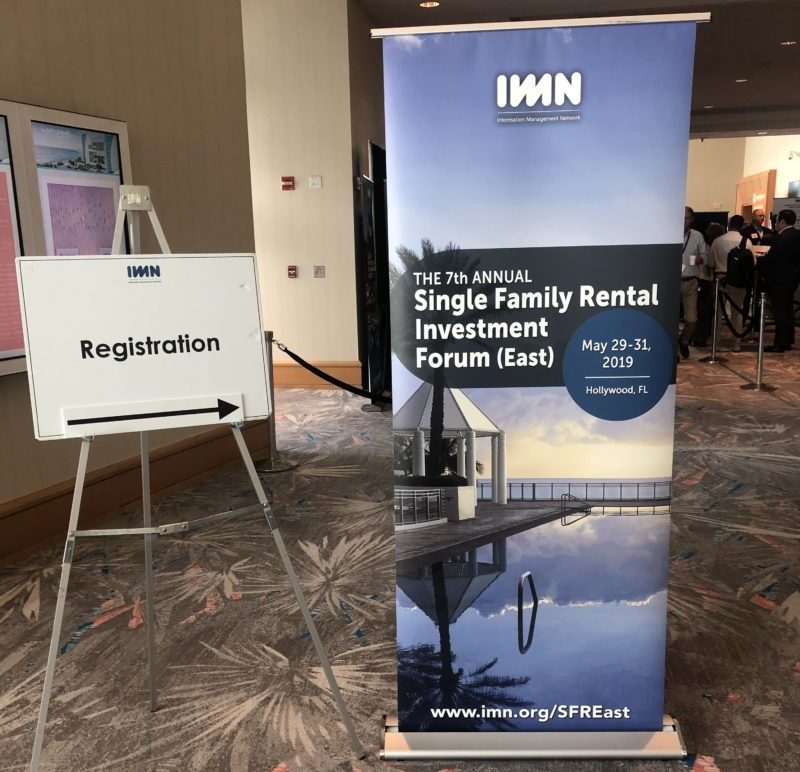Top Trends to Watch in the Single-Family Rental Market

Abundant incoming capital, the entrance of new private lenders and institutional investors, and technological innovation are among the top trends to watch in the single-family rental (SFR) market over the new few years. This is according to speakers on the “State of the SFR Industry” panel at IMN’s 7th Annual Single-Family Rental Investment Forum East, held in Hollywood, FL.
SFR was once thought of as a growth strategy for investors looking to buy low-priced properties after the financial crisis. Today, the SFR market has matured into a legitimate asset class attracting a wide range of investors and lenders.
Strong Fundamentals Driving Investor Interest in SFR
The SFR market has attracted investor interest due to its strong fundamentals, panelists noted. The sector has seen impressive rent growth and stable NOI. There is also abundant demand for and limited supply of affordable SFR housing options.
The sector achieved 3% year-over-year rent growth in 2018 and 2% year-over-year so far in 2019, noted Jeff Cline, executive director at SVN. In the top 63 SFR investment markets, rents are also up year-over-year, he said. The West Coast and Southeast had the biggest rent gains in the last year.
Renter household growth has also been robust. Household formation from 2005 to 2018 for renters totaled 9.2 million. The total was only 3.8 million for homeowners, Cline added. From 2019 to 2022, renter household growth is again expected to outpace homeowners, at 4.6 million compared to 3.7 million.
This is coupled with poor for-sale housing affordability due to rising construction costs and constrained income growth.
Maturing SFR Market is Attracting More Capital
Several panelists also discussed the sector’s transformation from a trade to a business over the last five years.
“The single-family rental space is being viewed as a legitimate asset class, validated with both retail and institutional investors, and as an alternative to equities,” noted panelist Gary Beasley, CEO of online SFR platform Roofstock. “Equities and single-family rental returns have been very similar over the last 20 or 30 years.”
As operators are getting more efficient, and new players are adding liquidity to the space, the SFR market is maturing.
As a result, investors have the confidence to carry out their SFR strategies and build successful properties because there is an abundance of reliable capital sources to tap into.
And while there are indications of weakness in the larger real estate industry and economy, the SFR market isn’t displaying these same signs. Strong household formation rates and the accompanying shortage of workforce housing supply show that SFR still has room to grow. This presents an opportunity for developers and investors to add inventory in the workforce space.
Beasley added that in addition to robust domestic interest, large global funds are beginning to enter the asset class.
SFR Trends Impacting the Market
As interest has grown in SFR, several major trends are developing. Panelist Kevin Ortner, CEO of Renters Warehouse, said one will be continued consolidation. He noted that when he entered the property management side of SFR 12 years ago, operations were “highly fragmented.” Operators today are finding that merging with another firm helps them gain market share, improve property operations or vertically integrate by bringing in new services.
“Operations have to continue to become more efficient. There are now large-scale managers that have started to figure out how to manage these properties at scale with multiple owners and types of assets,” he said.
SFR firms are also improving operations by investing in technology and data analytics, which will play a key role in the market.
“A lot of firms are investing in technology development to leverage that data to make their operations smoother and more efficient,” Ortner added.
Fellow panelist Beasley agreed. He noted that his firm is using machine learning and artificial intelligence for renovation estimates, searching public records and developing a detailed database to inform valuations.
But while technology will be vital, it won’t disrupt the housing industry like it could other sectors like retail or self-storage. “You can’t replace housing, which creates an interesting long-term thesis for housing investment,” he stated.
Interested in investing in SFR? Arbor offers an array of SFR portfolio financing options to fit your investment strategy. Visit our SFR financing page for more information.

